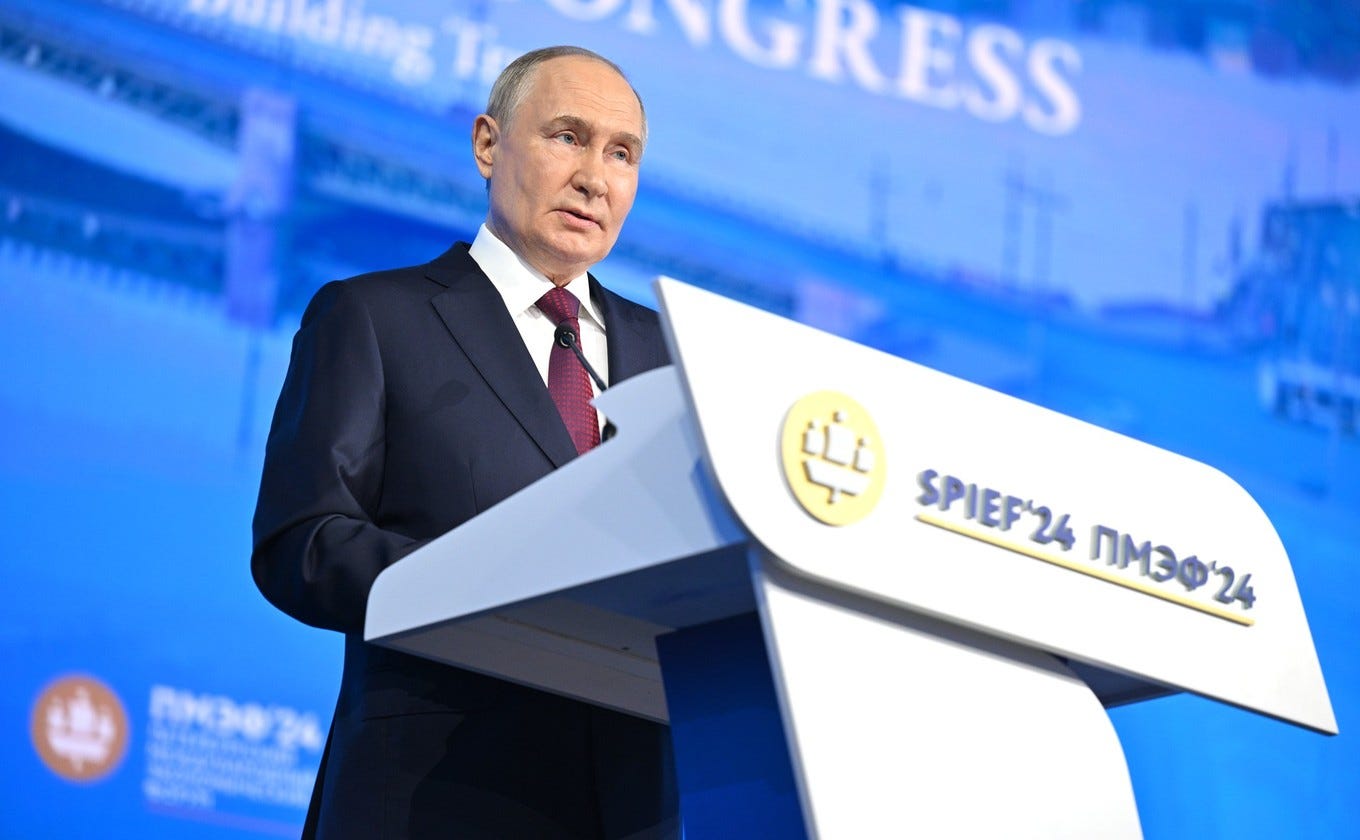Putin speaks at economic forum
State stewardship of a mixed economy with a dynamic private sector
The St. Petersburg Economic Forum is one of the biggest and most important business events in the world. It has met annually since 1997, and since 2005, it has been held under the auspices of the President of the Russian Federation. Participants in the Forum include its partners and shareholders, managers of major corporations, well-known analysts, and public officials. The Forum provides space for dialogue, for discussion of global economic trends and tendencies, and for the establishment of business ties and economic relations.
In the 2023 Forum, there were more than 17,000 participants from 130 countries. More than 900 business agreements totaling 3,860 billion Russian rubles, including 43 agreements with representatives of foreign companies, were signed. Preliminary projection for the 2024 Forum indicated the participation of at least 12,000 people from more than 100 countries.



